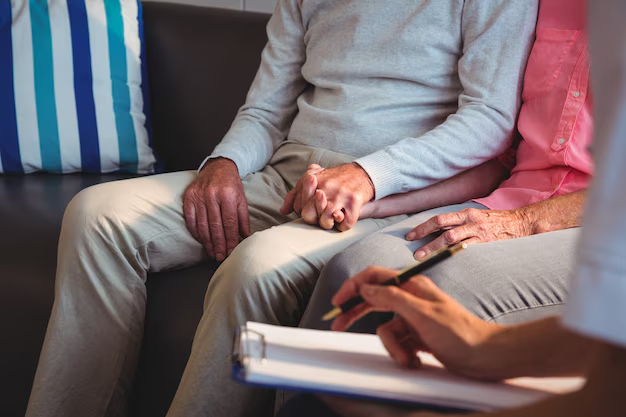Understanding Parkinson's Disease: Causes and Insights 🧠
Parkinson's disease is a chronic and progressive movement disorder that affects millions worldwide. But how do you actually get Parkinson's disease, and what are the risk factors involved? In this article, we'll explore the various aspects of Parkinson's, offering insights into its causes, symptoms, and prevention tips in an engaging and easy-to-understand manner.
What is Parkinson's Disease?
Parkinson's disease primarily affects the central nervous system, leading to a gradual decline in motor control. This disorder results from the degeneration of neurons in a part of the brain known as the substantia nigra. These neurons produce dopamine, a crucial neurotransmitter responsible for transmitting messages that coordinate movement. As Parkinson's progresses, dopamine production decreases, causing movement-related symptoms.
Core Symptoms of Parkinson's Disease
- Tremors: Uncontrollable shaking, often starting in a limb, can be the most noticeable symptom.
- Rigidity: Muscle stiffness that can limit the range of motion and cause discomfort.
- Bradykinesia: Slowness of movement makes everyday tasks challenging.
- Postural Instability: Difficulty with balance and coordination increases the risk of falls.
Factors Contributing to Parkinson's Disease
While the exact cause of Parkinson's disease is still not fully understood, several factors are linked to its development.
1. Genetic Predisposition
Genetics plays a significant role in Parkinson's. Some cases involve mutations in specific genes like LRRK2, PARK7, and PINK1, which can increase susceptibility. However, not everyone with these genetic variants will develop Parkinson's, indicating that other factors are at play.
2. Environmental Triggers
Certain environmental factors may increase the risk of developing Parkinson's:
- Pesticides and Herbicides: Long-term exposure may disrupt dopamine production.
- Heavy Metals: Exposure to metals like manganese or lead can be harmful.
- Industrial Toxins: Working in industries with high chemical use might increase risk.
3. Age and Gender
Age is a known risk factor. Most people diagnosed with Parkinson's are over 60. However, younger individuals can also develop it. Gender also plays a role, as men are about 1.5 times more likely to have Parkinson's than women.
4. Head Trauma
Previous severe head injuries may increase the likelihood of developing Parkinson's. This association has been noted in individuals with repeated head trauma history, such as athletes in contact sports.
Lifestyle Factors and Parkinson's Disease
Lifestyle choices can also impact the risk of developing Parkinson’s. Here, we explore the relationship between daily habits and disease risk.
1. Diet and Nutrition
A healthy diet rich in fruits, vegetables, and antioxidants may reduce risk, while high-fat and processed foods could potentially increase it. Some studies suggest the Mediterranean diet, which is high in healthy fats and antioxidants, might be beneficial.
2. Physical Activity
Regular exercise has been associated with a lower risk of Parkinson's. Engaging in activities like walking, swimming, or yoga not only aids in general well-being but might also help protect brain health.
Myths and Misconceptions
Understanding what does not cause Parkinson’s is just as important:
- Vaccines do not cause Parkinson’s and are a critical part of public health.
- Stress alone is not a direct cause of Parkinson's, although it can exacerbate symptoms.
- Dietary supplements are not replacements for a balanced diet and should not be relied upon to prevent Parkinson's without medical consultation.
Early Detection and Diagnosis
Detecting Parkinson's early can lead to better management of symptoms. However, there is no singular test to diagnose it, and physicians often rely on clinical assessments and the patient’s medical history.
1. Recognizing Early Signs
- Subtle changes in handwriting
- Reduced facial expressions
- Changes in voice or speech
- Slight tremors in fingers or hands
2. Medical Evaluation
Upon noticing symptoms, visiting a healthcare provider for a comprehensive evaluation is necessary. This may include neurological exams and monitoring over time.
Managing Parkinson’s Disease
While there is no cure for Parkinson's, various strategies can help manage symptoms and improve quality of life.
1. Medications
Medications such as Levodopa can help replenish dopamine levels, mitigating some symptoms. Dopamine agonists may also be prescribed to mimic dopamine's effects.
2. Therapies
Physical, occupational, and speech therapies play a crucial role in helping patients maintain mobility, handle daily activities, and improve speaking abilities.
3. Lifestyle Adjustments
Practices like consistent exercise, a balanced diet, and stress management can alleviate symptoms. Safety modifications in the home may also be necessary to prevent falls.
Insights into Ongoing Research
Research into Parkinson's is ongoing, with scientists continually seeking to understand its causes and develop new treatments. Biomarkers and imaging studies show promise in early detection, and gene therapy is being explored as a potential future treatment.
A Brighter Outlook
Despite the challenges of Parkinson's, ongoing advancements in research, medicine, and support systems offer hope for those affected. Understanding the risk factors and symptoms can empower individuals and families to seek early intervention and participate in broadening knowledge about the condition.
Key Takeaways & Tips
- 🧬 Genetics: Know your family history; some genetic factors can increase Parkinson's risk.
- 🌿 Environment: Minimize exposure to pesticides and industrial chemicals.
- 🍎 Lifestyle: Maintain a healthy diet and engage in regular physical activity for better brain health.
- 🔍 Awareness: Be vigilant for early symptoms and seek medical advice if needed.
- 💊 Management: Use medications, therapies, and lifestyle changes to manage symptoms effectively.
- 🔬 Hope in Research: Stay informed about research advances and consider participating in clinical trials.
Keeping informed and proactive about Parkinson’s disease can lead to better outcomes and new understandings about this complex disorder. 💡

Related Articles
- Are There Environmental Causes Of Parkinsons
- Can Alcohol Cause Parkinson's
- Can Concussions Cause Parkinson's
- Can Females Get Parkinson Disease
- Can Head Trauma Cause Parkinson's
- Can Parkinson Disease Cause Dizziness
- Can Parkinson's Affect Eyesight
- Can Parkinson's Affect Memory
- Can Parkinson's Affect Speech
- Can Parkinson's Affect Vision